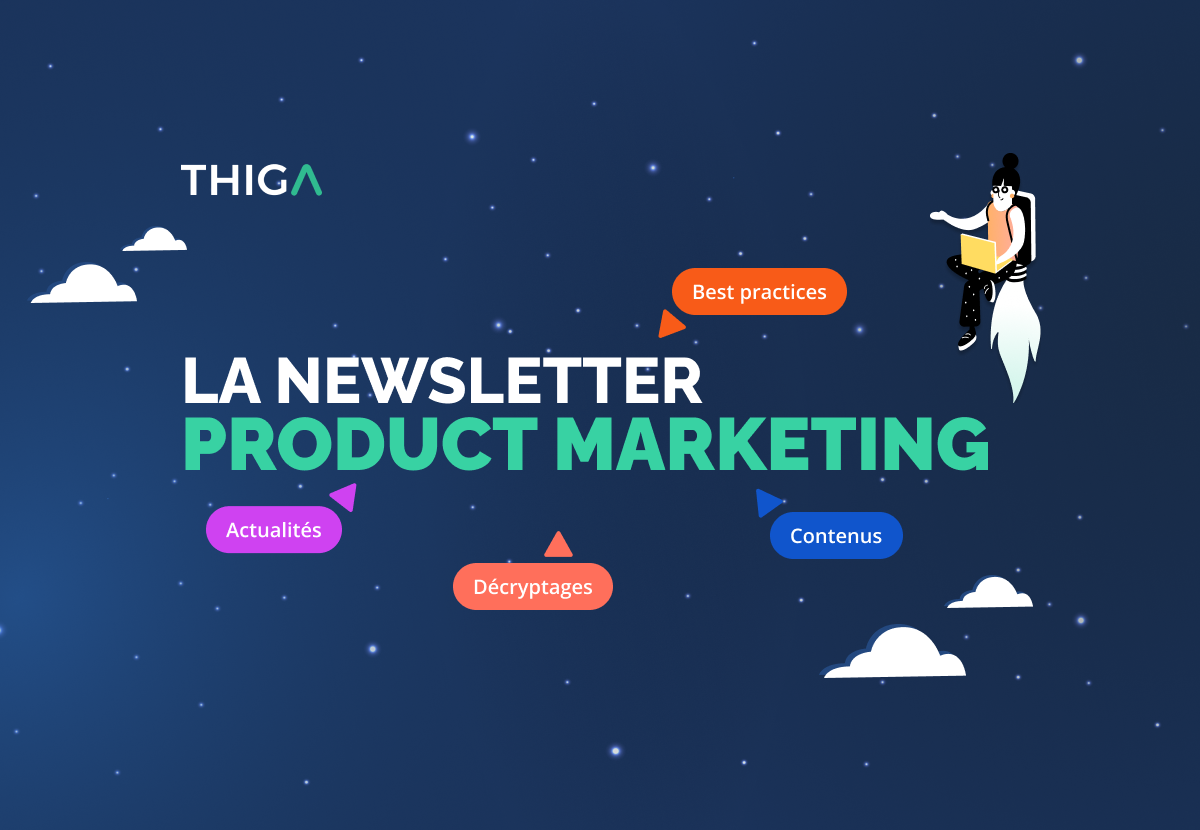In today’s landscape, launching a technically polished product is no guarantee of success. By sidelining business concerns, too many Product teams focus solely on churning out features without ensuring they resonate with their audience. Clara Aubès, Product Marketing Manager at Thiga, explains in this article how to realign business and Product priorities through Go-To-Market (GTM), ensuring the long-term viability of your products.
After months of hard work, you finally launch that feature you’re so proud of. You’ve refined every last detail. But a few months later, disaster strikes—no one is using it! While this scenario may seem nightmarish, it’s actually quite common. The problem? Simply creating a product that is technically and functionally sound isn’t enough to sell it. Too many Product teams treat feature delivery as an end in itself, disregarding the business side and failing to assess the actual value generated. As a result, they fall into a feature factory mindset—focusing solely on producing solutions without ensuring they find an audience or contribute to the company’s broader strategy.
Integrating business concerns into the Product cycle is the best way to create solutions that truly matter—for both users and the company. And the key to achieving this is simple yet often overlooked: Go-To-Market (GTM).
Go-To-Market: Bridging the gap between Product and Business
At its core, Go-To-Market consists of all the actions aimed at promoting your product’s value to the right audience. But more than that, it’s a strategic thought process designed to align market expectations with business priorities. In other words, it starts with a fundamental question: How will the product we’re developing succeed? And from there, many others follow: Who will buy my product? What alternatives already exist? Does my product offer enough differentiated value to justify its purchase?
Amplify your product’s impact
At Thiga, we firmly believe that treating Go-To-Market as a final step in the Product cycle is like closing the stable door after the horses have bolted—it’s already too late! Instead, GTM should be embedded throughout the entire Product process. This is one of the key ways to reconnect Product and Business priorities and maximize market impact.
As Kai Hansen, Product expert and Partner at Thiga, puts it: "Without Go-To-Market, you’ll end up with plenty of features but little adoption and engagement." In other words, a great-looking product that’s doomed to collect dust. Our experience has shown that Go-To-Market is often perceived as a one-off process, reduced to a simple communication plan that begins at delivery and ends shortly after launch. When this happens, GTM teams are forced to scramble to connect an existing product to market needs—an uphill battle that often renders Go-To-Market ineffective.
Worse still, to compensate, teams pour resources into achieving their objectives, often through costly acquisition campaigns. The result?
- High traffic but low conversion.
- Strong initial adoption, but rapid drop-off in usage.
- Heavy reliance on discounts and promotions to drive sales.
This GTM approach is also flawed from a sales standpoint. Targeting a market that’s too broad dilutes business teams’ efforts. Even worse, in trying to appeal to everyone, they lose sight of their ICP (Ideal Customer Profile). Overwhelmed by contradictory customer feedback, Product teams end up chasing a never-ending stream of requests, leading them straight into the feature factory trap—ultimately weakening the product’s initial positioning.
Thiga’s approach to Go-To-Market
At Thiga, we advocate for a less siloed approach to GTM—one that integrates business concerns into the Product development phase, starting from opportunity qualification and ideation. This ensures the product is not only tailored to user needs but also aligned with market and business realities. In other words, a product that isn’t just functional and accessible, but also economically viable—a necessity in today’s saturated market, where technical quality has become the baseline expectation.
This approach also requires keeping Go-To-Market alive long after launch, throughout the product’s entire lifecycle. After all, with new competitors, emerging technologies, and evolving regulations, the market is constantly shifting. User needs and preferences change, too. Adapting both your product and its market strategy is essential to maintaining relevance and longevity.
The key steps for a successful Go-To-Market
Embedding Go-To-Market into the Product process relies on three key principles: understanding the environment, continuous iteration, and fostering close collaboration with Business teams.
Understand the product’s environment
First and foremost, the Product team must have a firm grasp of the context in which their solution operates. This requires:
- A thorough market analysis, covering economic, regulatory, and social trends.
- A deep understanding of competitors and their strategies.
- A clear picture of the target audience, both buyers and end users (Buyer Research).
- Expertise in go-to-market mechanisms, including sales cycles, distribution channels, and acquisition strategies.
Iterate continuously
Go-To-Market should be considered from the strategy phase onward and throughout the design process, incorporating feedback and market constraints—just like a product itself!
From the moment an opportunity is identified, both the user problem and its commercial potential should be validated in parallel. Once prioritized, the Product team refines the target audience and defines what makes the product uniquely valuable. This strategic thinking shapes key decisions, such as:
- Defining the MVP scope – By integrating business considerations, you ensure the first version is meaningful in the market.
- Positioning the product – What space does it occupy relative to competitors?
- Structuring the offer and pricing – How will the product be packaged? What pricing models will be used?
- Choosing distribution channels – How will the product be sold?
It’s crucial to mitigate risks before making these strategic decisions. Throughout discovery, gather feedback from both Business teams and the market. During delivery, consider beta testing or a soft launch to validate assumptions.
Foster a collaborative approach
Ongoing collaboration between Product, Business, and Marketing teams is essential for a successful Go-To-Market. These teams must communicate regularly to align on priorities and strategic objectives. This cross-functional partnership ensures that:
- The product aligns with market expectations.
- Marketing and Business teams clearly understand its value, making it easier to sell.
Drawing from his experience at Google, Kai Hansen shares an example of how the tech giant operates: "For certain launches, all relevant teams met weekly, starting six months before release. The goal? To share progress and priorities, ensuring strong alignment and seamless execution," he recalls.
Ultimately, aligning Business and Product is a fundamental key to market success. Integrating Go-To-Market throughout the entire Product process is crucial to achieving this. But be warned: adopting new rituals or best practices isn’t enough! To truly make an impact, companies must rethink their organizational structure—especially how teams collaborate and integrate market feedback throughout the product lifecycle.
In the long run, this shift doesn’t just maximize a product’s chances of success—it fosters a culture of continuous innovation, where teams are aligned, proactive, and able to swiftly adapt to market changes.
To learn more, check out our article on how to successfully execute a Go-To-Market strategy.




